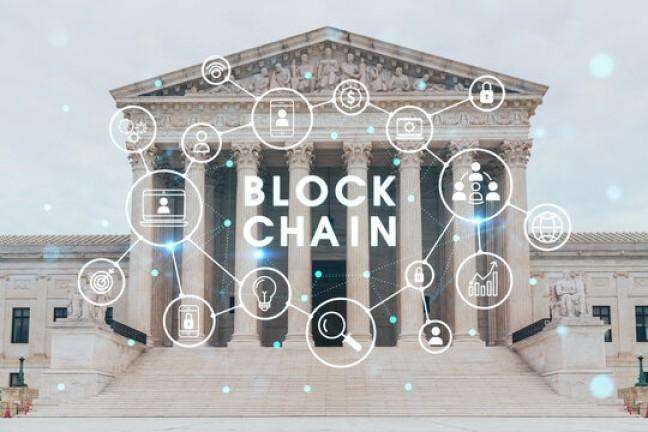Blockchain technology is widely recognized for its role in the creation of cryptocurrencies like Bitcoin and Ethereum. However, its potential extends far beyond digital currencies. In this article, I will explore the various applications of blockchain technology beyond cryptocurrency, discussing how it is transforming industries such as supply chain management, healthcare, voting systems, and intellectual property protection. I will delve into the mechanics of blockchain, provide real-world examples, and offer a detailed look at how blockchain is making an impact across various sectors.
Table of Contents
Understanding Blockchain Technology
At its core, blockchain is a decentralized, distributed ledger technology. It allows data to be stored across a network of computers in such a way that the information is immutable, transparent, and secure. Each “block” in the blockchain contains data and is linked to the previous one, forming a chain. This structure ensures that once data is recorded, it cannot be altered or deleted without the consensus of the network participants. This feature is what makes blockchain so appealing for various applications outside cryptocurrency.
1. Supply Chain Management
One of the most promising applications of blockchain is in supply chain management. Supply chains are often complex, involving multiple parties, intermediaries, and processes. Blockchain offers a way to streamline and secure this process by providing a transparent and immutable record of every transaction.
How Blockchain Enhances Supply Chains
- Transparency: Blockchain creates an unalterable record of every product movement, from raw material to finished product. This enables consumers and companies to trace the origin of goods and confirm their authenticity.
- Efficiency: By eliminating the need for intermediaries, blockchain can speed up transactions and reduce costs. Smart contracts can automate payments and trigger actions based on predefined conditions.
- Security: Since each transaction is recorded on the blockchain and is cryptographically secure, it is nearly impossible to tamper with the data.
Example: Walmart and IBM
Walmart and IBM have teamed up to apply blockchain technology to track the journey of food products. In the event of a food safety incident, the blockchain allows the company to trace the product’s journey across the supply chain in seconds, reducing the time spent on recalls from days to minutes.
| Feature | Traditional Supply Chain | Blockchain-based Supply Chain |
|---|---|---|
| Transparency | Limited | High |
| Efficiency | Low (due to intermediaries) | High (automated smart contracts) |
| Security | Vulnerable to fraud | Highly secure and tamper-proof |
| Traceability | Limited | Full, from origin to consumer |
2. Healthcare
Blockchain has the potential to revolutionize healthcare by providing secure and efficient methods for managing patient data, tracking medical records, and ensuring the authenticity of pharmaceuticals.
Benefits of Blockchain in Healthcare
- Data Security and Privacy: Blockchain’s encryption and decentralized nature ensure that sensitive patient data is kept secure and is only accessible by authorized individuals.
- Interoperability: Blockchain can provide a unified, accessible platform for different healthcare providers, allowing for seamless data sharing and collaboration.
- Drug Tracking: Blockchain can be used to track the production and distribution of pharmaceuticals, reducing the risk of counterfeit drugs entering the market.
Example: Medical Records Management
Patients can have their medical records stored on a blockchain, where they control access. A patient visiting a new doctor can grant temporary access to their medical history, ensuring privacy while enabling the doctor to make informed decisions.
| Feature | Traditional Healthcare Systems | Blockchain-enabled Healthcare Systems |
|---|---|---|
| Data Security | Vulnerable to breaches | High-level encryption and security |
| Data Accessibility | Limited and siloed | Fully accessible and patient-controlled |
| Interoperability | Complex and fragmented | Seamless data exchange across providers |
| Drug Authentication | Not always guaranteed | Full transparency in production and distribution |
3. Voting Systems
Blockchain technology is increasingly being considered for use in voting systems, offering a secure, transparent, and efficient method for casting and counting votes. Elections are susceptible to fraud and manipulation, and blockchain can provide a way to ensure the integrity of voting processes.
Advantages of Blockchain Voting
- Transparency: Every vote cast on the blockchain is recorded and can be audited by anyone, making it nearly impossible to alter the results.
- Security: Blockchain’s cryptographic security ensures that votes cannot be tampered with or changed once recorded.
- Accessibility: Blockchain voting can be done remotely, allowing more people to participate in the electoral process, especially in regions where physical voting is difficult.
Example: Estonia’s E-Voting System
Estonia is a pioneer in using blockchain for e-voting. The country allows citizens to vote in elections using digital IDs, with the entire voting process recorded on a blockchain. This has improved voter participation and reduced the chances of fraud.
| Feature | Traditional Voting Systems | Blockchain-based Voting Systems |
|---|---|---|
| Transparency | Limited and often opaque | Fully transparent and auditable |
| Security | Vulnerable to manipulation | Highly secure and tamper-proof |
| Accessibility | Limited to physical locations | Remote voting from anywhere |
| Fraud Prevention | Susceptible to fraud | Nearly impossible to manipulate |
4. Intellectual Property Protection
Intellectual property (IP) is one of the most valuable assets for creators and businesses. Blockchain provides a way to prove ownership of digital assets and track the use of IP in a transparent and secure manner.
Blockchain and Intellectual Property
- Ownership Tracking: Blockchain allows creators to register their work (whether it be a song, artwork, or invention) and have a permanent, immutable record of ownership.
- Royalty Distribution: Smart contracts can automatically distribute royalties to creators when their work is used, eliminating intermediaries and ensuring fair compensation.
- Proof of Authenticity: Blockchain offers an unchangeable record of a work’s creation and provenance, which can be used to prove authenticity and prevent piracy.
Example: VeChain and Luxury Goods
VeChain, a blockchain platform, is used by luxury brands like Louis Vuitton to verify the authenticity of their products. By scanning a QR code, customers can trace the origin of the product and ensure it is genuine.
| Feature | Traditional IP Protection | Blockchain-based IP Protection |
|---|---|---|
| Ownership Tracking | Manual and paper-based | Immutable, digital record |
| Royalty Distribution | Manual and time-consuming | Automated and instant |
| Authentication | Vulnerable to forgery | Guaranteed authenticity |
| Licensing | Complicated and opaque | Transparent and efficient |
5. Financial Services
Beyond cryptocurrency, blockchain can transform traditional banking and financial services by improving security, reducing fraud, and increasing efficiency.
Blockchain in Financial Services
- Cross-border Payments: Blockchain allows for quick and low-cost cross-border transactions, bypassing traditional banking intermediaries.
- Smart Contracts: These self-executing contracts automatically enforce agreements between parties, reducing the need for intermediaries and increasing trust.
- Decentralized Finance (DeFi): DeFi applications built on blockchain enable individuals to lend, borrow, and trade assets without relying on traditional banks.
Example: Ripple and Cross-Border Payments
Ripple, a blockchain-based platform, is used by financial institutions to facilitate cross-border payments. Ripple’s blockchain allows money to move quickly and securely across borders, reducing transaction fees and processing times.
| Feature | Traditional Financial Systems | Blockchain-based Financial Systems |
|---|---|---|
| Cross-border Payments | Slow and expensive | Fast and cost-effective |
| Smart Contracts | Not available | Fully automated and self-enforcing |
| Transparency | Limited | Full transparency and auditability |
| Fraud Prevention | Vulnerable to fraud | Highly secure and tamper-resistant |
6. Real Estate
Blockchain is beginning to revolutionize the real estate industry by providing more efficient ways to handle property transactions, title deeds, and land ownership records.
How Blockchain Transforms Real Estate
- Title and Deed Management: Blockchain can be used to store property titles and deeds, reducing the risk of fraud and errors in ownership records.
- Property Transactions: By using smart contracts, property transactions can be automated, reducing the need for intermediaries like lawyers and real estate agents.
- Tokenization of Real Estate: Blockchain allows for the tokenization of real estate assets, enabling fractional ownership and easier access to investment opportunities.
Example: Propy and Global Real Estate Transactions
Propy, a real estate platform, uses blockchain to facilitate international property transactions. Through Propy, buyers and sellers can execute contracts, transfer funds, and close deals securely on the blockchain, making the process faster and more transparent.
| Feature | Traditional Real Estate Transactions | Blockchain-based Real Estate Transactions |
|---|---|---|
| Title and Deed Management | Paper-based and prone to errors | Digital, secure, and immutable |
| Transaction Process | Slow and reliant on intermediaries | Automated, fast, and transparent |
| Ownership | Limited access to investment | Fractional ownership and tokenization |
| Fraud Risk | High | Low |
Conclusion
Blockchain technology holds immense potential beyond cryptocurrency. It offers solutions for improving transparency, security, and efficiency across various industries, from supply chain management to healthcare, voting, and intellectual property protection. As blockchain continues to evolve, its applications will expand, offering new opportunities for innovation and growth.
In the coming years, I believe we will witness a transformation in industries that have traditionally been slow to adopt new technologies. Blockchain is poised to play a central role in this shift, providing more secure, efficient, and transparent systems for everything from financial transactions to healthcare and beyond. As we move forward, it will be exciting to see how blockchain continues to reshape the world as we know it.





